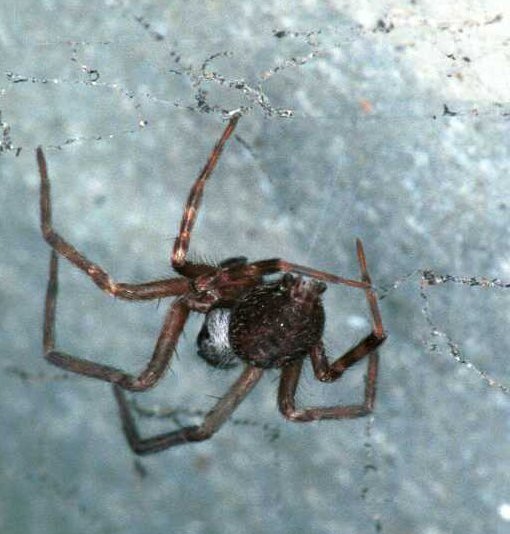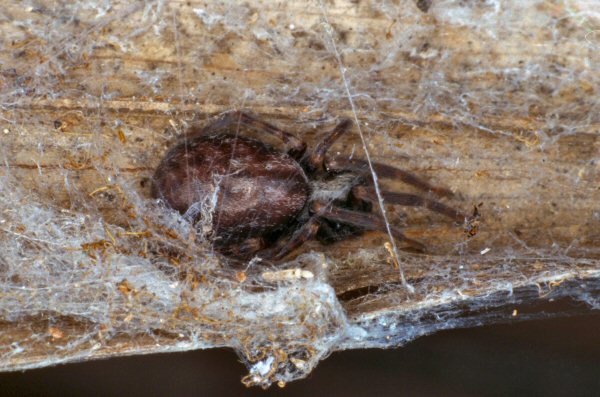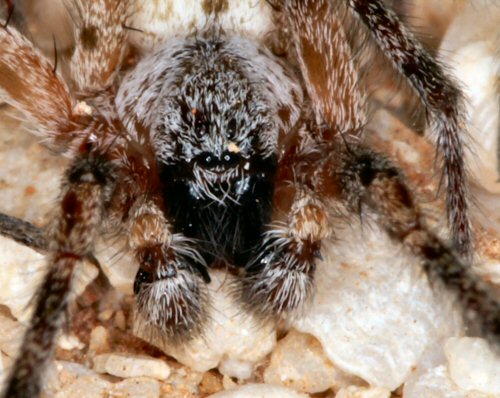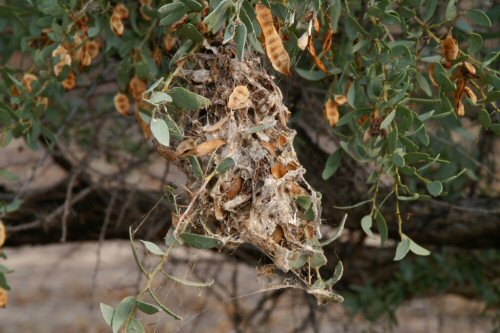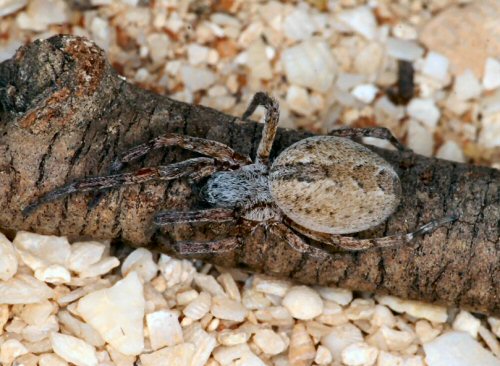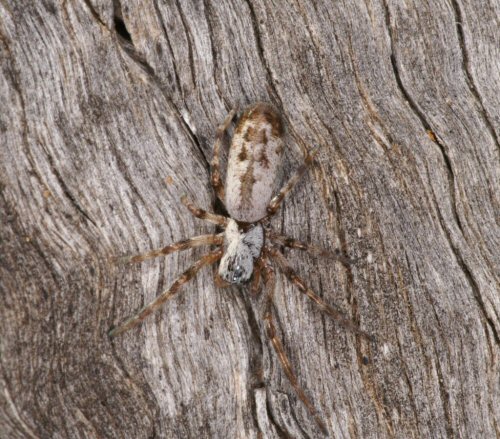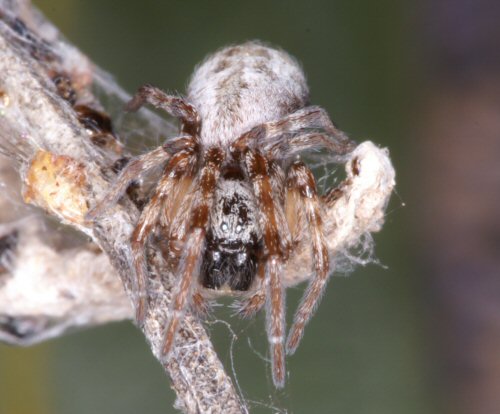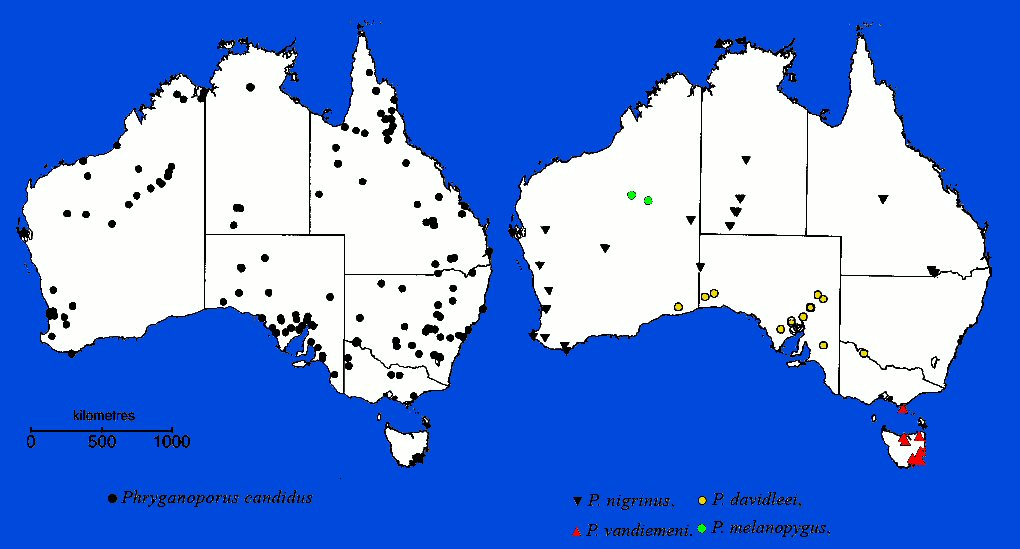An important characteristic of this family is the wooly combed catching silk, which often has a shiny blue color. It is a cribellate web.
The spider combs its silk with a comb or calamistrum located on her rear legs. The comb is made of a row of small, stiff hairs.

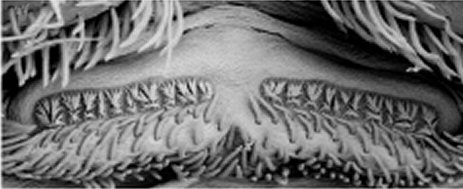
Cribellum
See also: The properties of silk
How does this wooly catching silk work? Around two closely located normal catching threads lies the wooly, combed catching threads. When an insect comes in contact with the wooly web, the barbed hooks of the insect get meshed in to the wooly silk. The threads of the wooly silk can stretch to ten times its original size. Therefore as the insect tries to free itself from the silk, it finds itself more and more snarled up into the mesh of the silk that keeps on stretching. All this time the spider is watching the show. After the insect is debilitated, the spider makes its move and kills the prey.
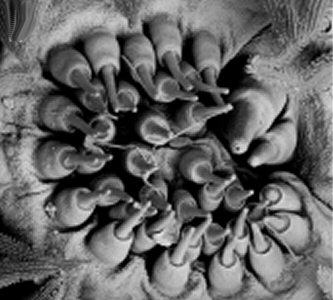
Spinners
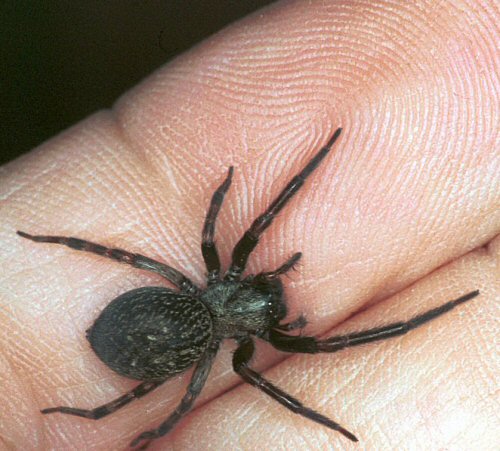
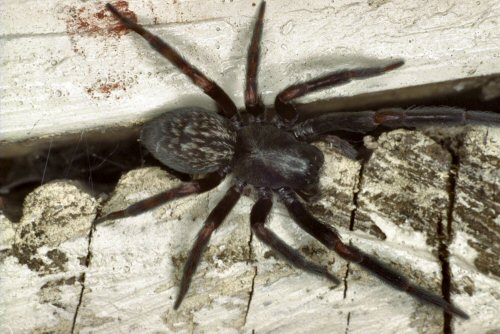
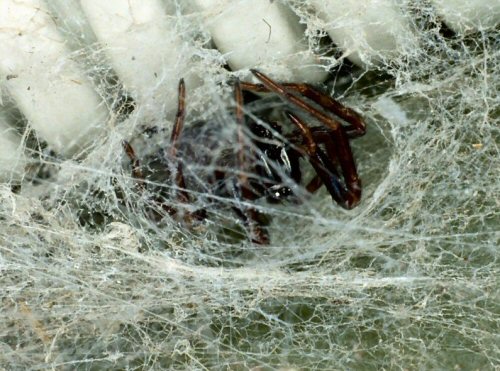
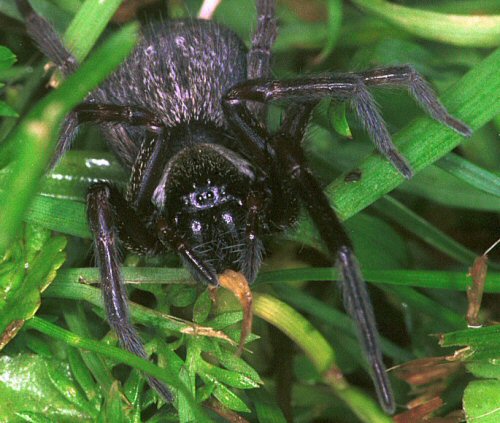

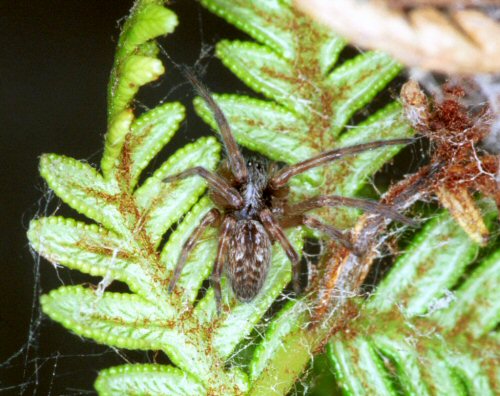
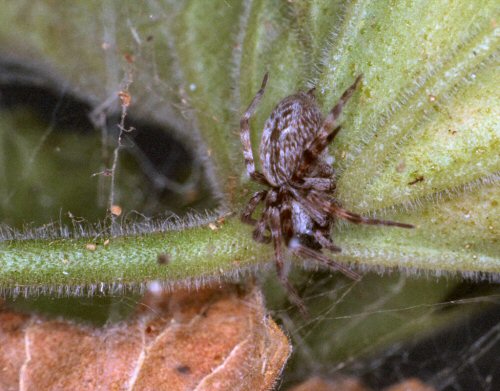
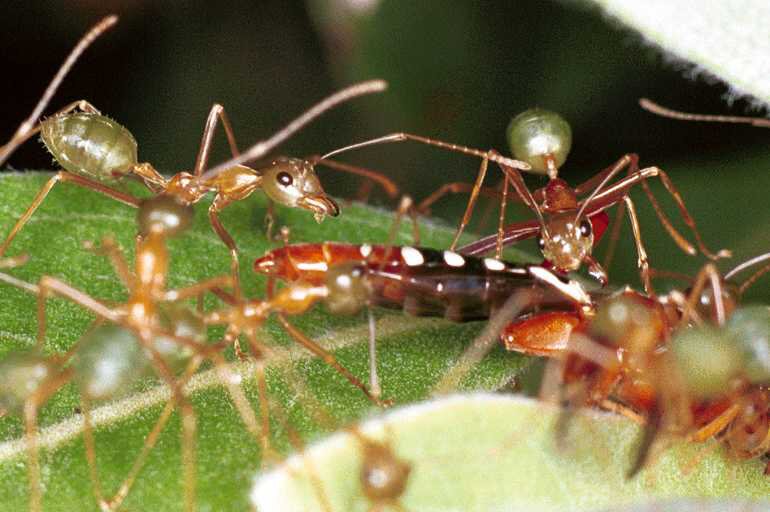 Oecophylla
virescens, green ants
Oecophylla
virescens, green ants 
